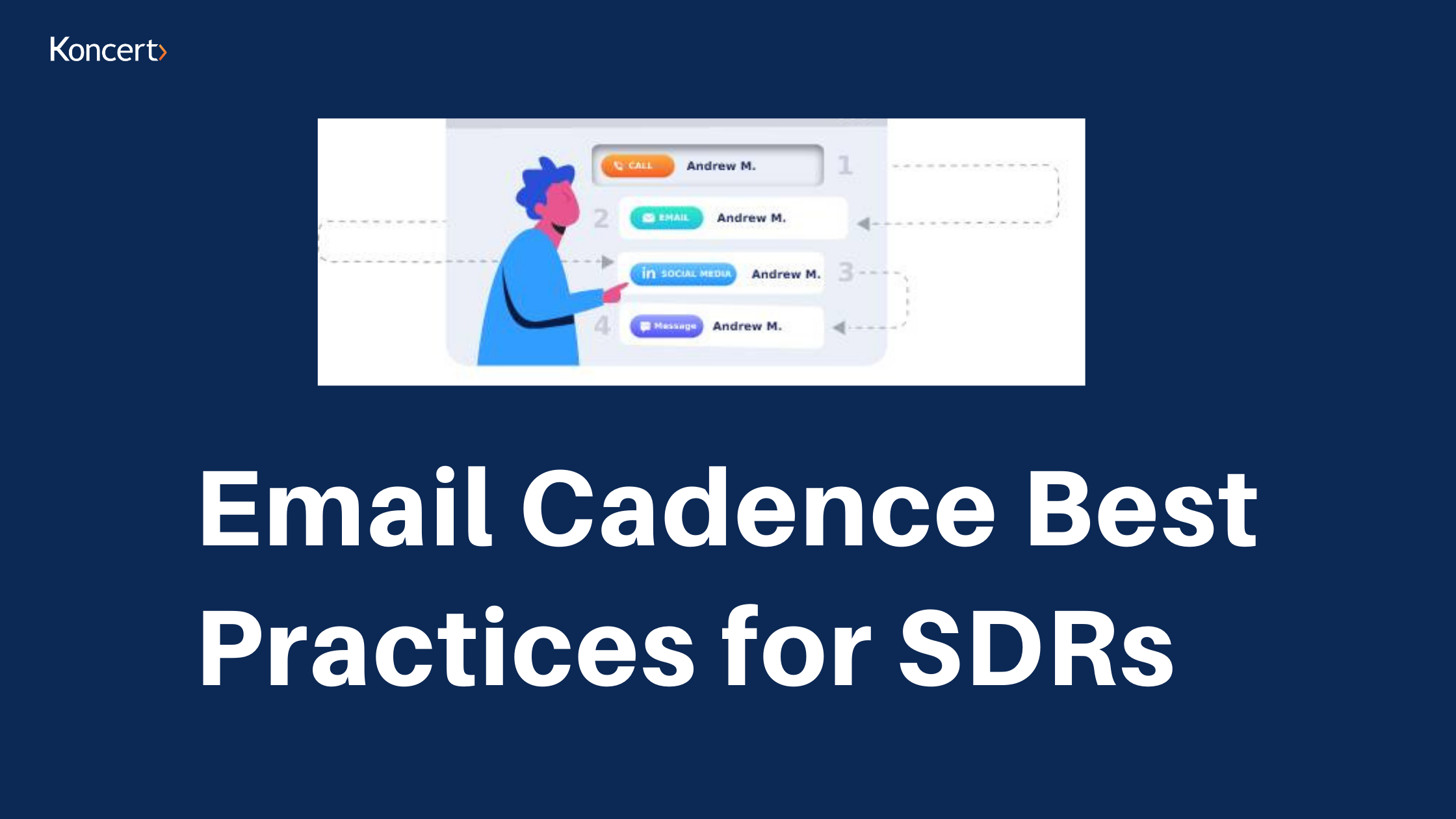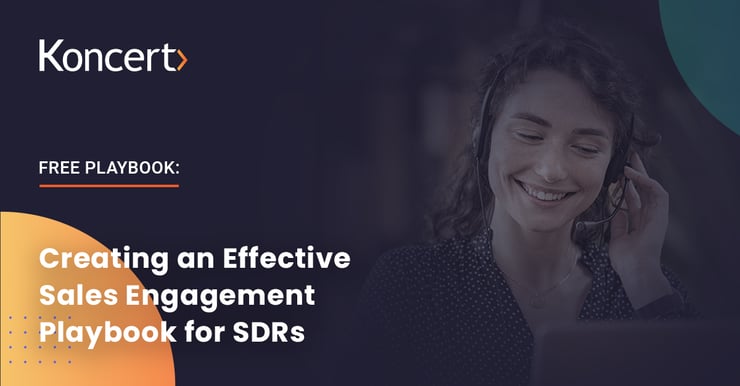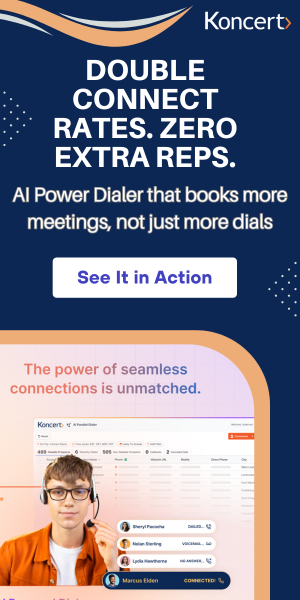
Sales development representatives, also known as SDRs, are responsible for many internal functions in a business. They help generate new prospects through outbound sales prospecting methods and pass those leads on to other salespeople who can focus on closing the deal.
However, that means that SDRs have one of the harder jobs on your sales team. They have to create meaningful conversations with those who might not have heard of your brand or know what it is that you can provide for them. In order to successfully complete their jobs, SDRs need to know how to research and identify target prospects, identify true intentions, and build strong connections to near strangers.
What is sales engagement? Read this blog.
One of the best ways for SDRs to connect and reach out to potential leads is through email. Email is quick, effective, and can be done using templates to make reaching many prospects easier. There’s always too much of a good thing, however, and knowing the right cadence to approach customers is key to an SDR’s job. Let’s look closer at email cadence and learn some best practices to keep in mind.
What is Email Cadence?
Just like with cold phone calls, there is an optimal sending frequency of emails that sales development representatives need to find in order to connect with their prospects and find leads to add to top-of-funnel sales efforts. If you bombard a prospect with emails, they aren’t going to be as receptive to your pitch. And if you don’t send enough emails, they might forget about you or move on to a more engaged competitor.
Email cadence is more than just finding the perfect number of emails to send during an outreach. It also means learning the right times to send your messages. Understanding where your prospects are in their customer journey can help you gauge the right time to send a follow-up or when to leave the interaction alone for a week.
How Email Ties into Sales Cadence
Your email cadence is a part of your overall sales cadence. Sales cadence refers to the entire process of bringing in a lead for the business. It includes steps like your planned email interactions, phone calls, social media messages and posts, video chats, and even targeted content. All these steps work together to create a smooth process from target audience to prospect to, eventually, a customer.
Emailing is an important step in the sales cadence. It gets you in front of the people you want to talk to and can provide you with communication that doesn’t feel as invasive to leads as constant phone calls and voicemails. Email helps your sales cadence take off and can be used alongside all the other steps to continually build a relationship and develop a better outreach program.
Best Practices for Email Cadence
Now that you understand what email cadence is, how it connects to the larger picture sales cadence, and why it’s important for sales development reps, let’s take a closer look at some of the best practices to keep in mind while you create your email cadence. These best practices can help you expedite your email cadence creation and start connecting with leads faster.
Create a Template Email Sequence
The first step you’ll want to work on while building an email sales cadence is finding the right email sequence timing and creating a rough template for what you want your message to say. You’ll want to keep it similar, especially in the first few outreach emails, in order to get in contact with more potential leads.
Know Your Target Before Reaching Out
Spend time researching your target carefully before you reach out to them. You want to have a rough idea of what the business is and who you are speaking to in order to get the best results. This will also help you find the best businesses to reach out to, rather than using guesswork.
Ask Questions and Listen
Avoid jumping into a hard sales pitch right away. That’s a big turn-off for potential leads who would rather ease into a conversation. Ask a few questions in your emails and actually review the replies from prospects. That helps you improve your communication and rapport with prospects in your email cadence.
Learn What Your Prospects' Needs Are
Every prospect is going to have slightly different needs from others. Knowing the specific pain points and areas of concern that your prospects have in their business will help you know the best solutions to offer and how to hand them down the sales pipeline to closing salespeople, as well as making further email communication more personalized.
Prove Your Brand’s Value
One of the key roles of a sales development representative is garnering enough interest from a prospect to make them want to learn more and move down the sales funnel. However, that requires you to be able to succinctly prove your brand’s value and deliver key messages in every email that you send in your sequence.
Follow-Up After Every Step
Follow-ups might seem like a throwaway practice, but they are actually key steps in your sales cadence. Follow-ups help you align after every communication, put forward any status updates or progress that has been made, and continually place you at the top of your prospects' inboxes. It also helps build a stronger relationship between you and your leads.
Know When to Walk Away
As a sales development rep, you’re doing a lot of initial outreach to potential leads, some of whom might just not be interested in what you have to offer. Knowing when to hold off communication or walk away from the interaction, rather than continually sending off messages that get ignored, helps preserve the relationship for the future.
Email Cadence Templates for Optimal Results
Emailing is an important part of a sales development representative’s job. It allows a stronger connection to be built between a sales rep and their leads, but too many emails or too few emails can disrupt that relationship and potentially lose your business sales and revenue. Creating a balance is key to success and having planned email cadence templates can help expedite the process.
To learn more about the right sales cadence, check out our Koncert Cadence software. You’ll learn how to connect emailing, calls, text, and social to create a seamless multi-channel outreach program for your prospects. Click on the link above to learn more and get started today.
Related Posts
10 min read
High-Quality Outreach - Why Koncert's ZigZag Dialing® Replaces Call Blasting
Dec 12, 2025 by Koncert Marketing
13 min read
7 Outbound Sales Trends for 2026 - AI, Latency, & Max Connect
Dec 4, 2025 by Koncert Marketing



.jpg?width=740&name=Creating-an-Effective-Sales-Engagement-Playbook-for-SDRs2%20(1).jpg)
